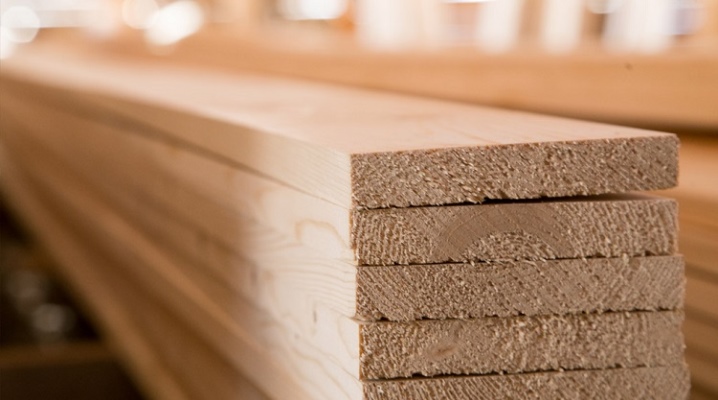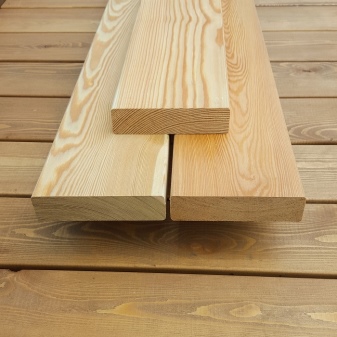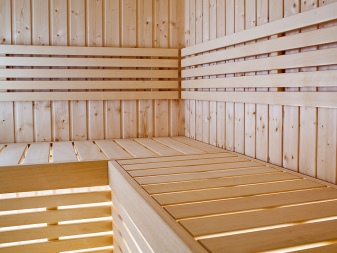Board thickness

Thickness is the distance between large surfaces (faces) of the board. Strength and the maximum load level for which the part is designed depend on this parameter. In addition, the thicker the material, the more expensive it is. You should know what thickness building and finishing boards are, and what parameters are considered the most optimal for various types of buildings.


Standard thickness
GOST 18288-87 indicates that a board is a piece of wood with a thickness of up to 100 mm and a width greater than the thickness multiplied by 2. Materials with other proportions of sections or a thickness of 10 cm or more belong to other types: timber, bar, lath, plank.
The general term for edged, unedged, planed workpieces is building board. Its standard thickness is determined by 2 GOST, depending on the type of wood.
- GOST 2695-83 for hardwood suggests 12 gradations from 19 to 100 mm. These are 19, 22, 25, 32, 40, 45, 50, 60, 70, 80, 90 and 100 mm.
- GOST 24454-80 for conifers establishes 11 standard sizes from 16 to 100 mm. These are 16, 19, 22, 25, 32, 40, 44, 50, 60, 75 and 100 mm.
Thus, the minimum thickness of a building board is 16, the maximum is 100 mm with a width of 75 to 275 mm, a length of 2, 3, 4, 6 m.

Along with GOST, industry standards or the manufacturer's own standards are allowed. Therefore, Russian companies have developed their own accepted line of standard sizes, which looks as follows:
- edged board - 20, 25, 30, 32, 40, 50 mm;
- unedged board - 25, 40, 50 mm;
- planed board - 20, 35, 45 mm.
Edged, unedged, planed board is considered a universal mierial. For individual tasks, special types of boards are produced, for which there are their own dimensional rulers in millimeters:
- front board, planken - from 15 to 25;
- floor board - from 21 to 40;
- parquet board - from 7 to 25, with gradations 7 (8), 10, 12, 15, 20, 22 and 25;
- deck board and deck board (decking) - from 22 to 40;
- lining according to the European standard (din 68126) - 12.5 (13), 16, 19;
- lining of domestic manufacturers - from 12 to 40;
- block house (imitation of a log) - 20, 22, 28, 30, 36, 40.
It should be noted that there are no strict standards (GOST) for most types of finishing boards, so materials of other sizes, for example, 14 mm, can be found on sale.


Features of choice
In order to choose the right thickness of the material, you need to take into account several points.
- The higher the expected load on the board, the greater its thickness should be. The load resistance is also influenced by the type of board and the type of wood from which it is made.
- Material thickness may vary depending on moisture content. Therefore, if raw material is purchased, calculations must be made taking into account the shrinkage factor. And also the material "breathes", slightly changing dimensions depending on the humidity of the surrounding air. Therefore, it is necessary to properly fix the boards, if necessary, leaving technical (temperature) gaps.
- It is important to choose the right nails or fasteners. General rule: the nail is driven to a depth of 3-4 times the thickness of the part.
- If the board will be processed (planed, sanded) before installation, do not forget to make the appropriate allowance when buying.
Each type of structure has its own optimum material thickness. Here are the most popular solutions for different types of work.
- For the basis of frame houses most often 50-60 mm materials are used. For the installation of floors, a single or double board is used, placed perpendicular to the plane of the floor. The thickness of a single board should not be less than 50 mm.
- When installing the roof for rafters, edged or planed boards with a size of 50 mm are chosen. For lathing, the thickness of the elements should be the greater, the greater the step between the rafter legs and the heavier the materials of the roof covering. For heavy materials (for example, cement-sand tiles), usually 30–35 mm boards are used, for light materials (for example, thin metal tiles) - 20–30 mm. If you use a special board with stepped edges, then its thickness can be 4–5 mm less. This is especially true if you plan to make a steep roof slope.
- For exterior decoration of the house materials are selected based on the design idea. The thickness standard is highly dependent on the selected style. But still, in the conditions of the Russian climate, it is not recommended to use cladding boards thinner than 20 mm for a warm house intended for year-round living.


The most popular materials are presented in certain standard sizes.
- 20 mm - of this size, most of the grooved and non-grooved facade boards (plank, wall paneling, facade profile and others) of domestic manufacturers are produced. But if you wish, you can find options 24, 28, 30 and even 40 mm.
- 21 mm - Scandinavian facade panels (UYV, UYS, UYL, UYS), which are gradually gaining popularity in Russia, are perfect for sheathing a house in a Swedish or Finnish style.
- Regular edged or sanded board 22 or 25 mm is the most affordable and at the same time the most versatile option for external cladding. Allows to create both monolithic and ventilated facades coming into fashion.
- Thickness 28 or 36 mm it is considered optimal for imitation of a log, as it looks the most colorful. In addition, materials with such a thickness are suitable not only for cladding, but also for building walls at home. In this case, they are mounted in 2 rows, between which there is a thick layer of heat insulator.
For fine finishing of walls and ceilings of interiors, a small or medium thickness of the panel is suitable. Most often it is a 12.5 or 15 mm euro lining, which is attached to the crate. A good solution will also be the arrangement of the ceiling from planed or flooring 16-19 mm boards. For the steps of the stairs inside the house, material is used with a thickness of at least 1/20 of the width of the march (for a march width of 90 cm, the thickness of the step is 45 mm). When arranging stairs for the porch, the steps are best made of anti-slip decking board, the optimal thickness will be 27–35 mm. For the floor of the terrace, veranda, gazebo, deck boards of this thickness are also well suited.
When arranging the floor in the house, it is important to choose the right thickness of the support lags. Usually they are made from softwood edged materials with a thickness of 50 mm. On top of the logs, a flooring or edged board of the following thickness is laid:
- 20–25 mm - if there is less than 50 cm between the lags;
- from 30-35 mm - if between the lags 50-70 cm.


Parquet is sometimes laid on top of the coating, using parquet, engineering or solid boards. The minimum thickness can be 4–7 mm. But it should be borne in mind that a board less than 10 mm is not intended for scraping, and panels no thinner than 12 mm are suitable for a warm floor. Usually they choose a 15 mm array - it can withstand several rounds and is suitable for a city apartment, house, and even an office.
When constructing a bath, special attention must be paid to the sheathing and thermal insulation of the steam room. The most budgetary option is 13-19 mm clapboard, but sometimes it quickly begins to warp. Therefore, more and more often, preference is given to planken, which is in many ways similar to clapboard, but significantly surpasses it in water resistance. Steam room cladding can also be made from 12–25 mm building boards.
The wood of the ceiling of the steam room is exposed to the most extreme effects of hot steam and temperature changes, so the boards on the ceiling in the bath must be chosen especially carefully. It is recommended to use coniferous material or from aspen, alder, linden, oak of the following thickness (in millimeters):
- for a flat ceiling - from 50;
- for hemming - 30-50;
- for a two-layer - 16-30;
- for panel - from 12 to 18.
A pouring floor for a washing and steam room is usually made of 40-50 mm edged boards.


How to determine?
Information about the dimensions of the board is always indicated on the package. For materials made in accordance with GOST, their type, grade and type of wood, dimensions, standard number are indicated. Nevertheless, when buying, it is imperative to take measurements to make sure that the piece of wood meets the declared characteristics, in particular, the desired level of humidity.
Uncalibrated boards (these are edged, unedged and planed boards) may vary in size within a batch, and if you need to sort accurately, they do it yourself. Therefore, when buying, you must have a tape measure with you. The thickness of the lumber is determined according to certain rules:
- it is measured as the distance between two layers;
- measurements are made with a tape measure, ruler or caliper;
- measurements can be made anywhere in the material, but not closer than 15 cm from the edge;
- thickness of unedged material is measured excluding bark.
According to GOST, the permissible deviations from the nominal dimensions in the thickness of the material should be no more than 1-3 mm.















The comment was sent successfully.